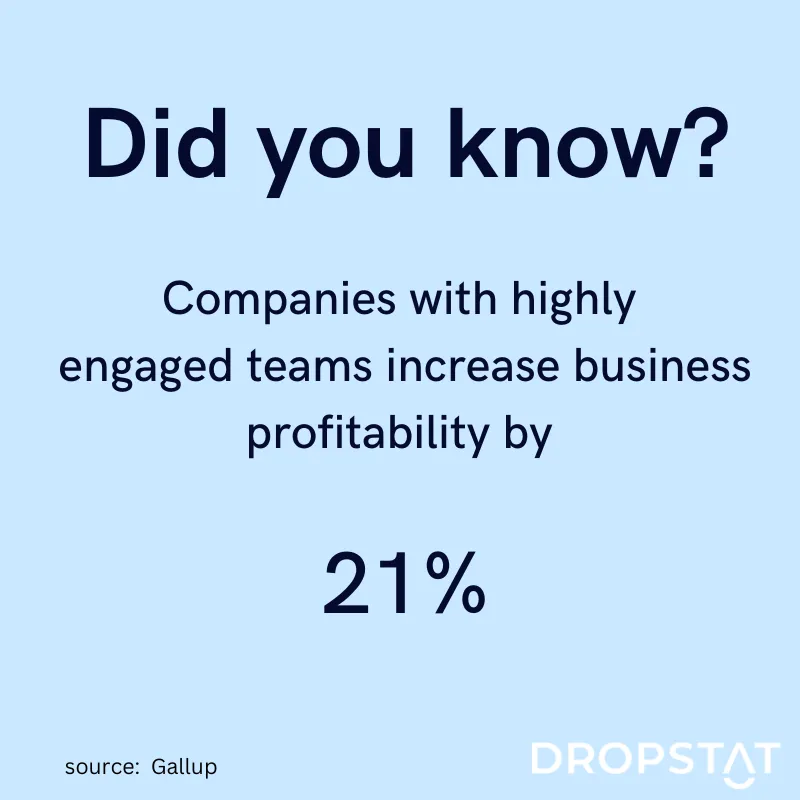The COVID-19 pandemic has taken a heavy toll on nurses and medical professionals. 1 in 4 healthcare workers have considered leaving their current jobs since the pandemic started due to stress, exhaustion, and burnout.
Even before the start of the pandemic, many healthcare workers in the U.S. were experiencing chronic distress and disengagement. According to the Willis Towers Watson study, only 44% of U.S. hospital workers were highly engaged.
What is employee engagement?
Employee engagement is employees’ commitment toward their workplace goals and values.
In healthcare facilities, engaged employees significantly impact their team and workplace. Highly engaged nurses improve patient care and satisfaction and lower mortality rates.
Why is employee engagement important in healthcare?
Here are some of the main benefits of employee engagement in the healthcare industry:
- Nurse engagement can be the difference between life and death – when nurses are highly engaged, it’s reflected in the patient outcomes. According to a Gallup poll studying over 200 hospitals, the engagement rate of nurses is the number one factor for patients’ mortality rates. Highly engaged nurses are less likely to make mistakes, more likely to follow safety policies, and behave more caringly toward patients.
- Employee engagement impacts the financial performance of healthcare facilities. Hospitals with the least engaged nurses pay more than $1.1 million annually in malpractice claims than those with the most engaged nurses.

- Highly engaged employees are 63% less likely to take off a sick day. This helps to prevent dangerous nurse shortages and expensive nurse overtime for colleagues who no longer have to pick up the slack.
- According to a recent Harvard Business Review article, “a 1% increase in employee engagement leads to a 3% reduction in hospital-related complications and a 7% reduction in hospital readmissions”.
5 Employee Engagement Ideas for Healthcare
Dropstat takes a look at 5 employee engagement strategies to help you increase engagement in your workplace.
1. Encourage open communication and feedback
Clear communication and regular feedback help keep employees engaged at work. Healthcare workers need to feel heard, and their feedback can give managers valuable insights into their employees’ feelings and struggles.
Managers can collect feedback through regular surveys, one-on-one meetings, and coaching sessions. Managers will build trust in the workplace by taking the time to identify with their employees’ pain points and measuring engagement.
2. Promote employee engagement activities
Creating a real sense that every employee is a valued part of the team increases retention, motivation, and overall job satisfaction.
Team building activities and social events will encourage your team to build friendships. Having work friends can help increase employee productivity levels. “22% of employees say working alongside friends makes them more productive.” Having friends at work makes it more enjoyable and helps maintain employee engagement.

3. Recognize & reward
Recognizing and rewarding your employees for their accomplishments and contributions is a no-fail employee engagement strategy. Healthcare workers constantly go above and beyond. Showing them appreciation, praising them for their hard work, and rewarding excellence will improve employee motivation and engagement.
You will inspire other team members and create a positive company culture by publicly recognizing and rewarding employees.
Dropstat’s integrated rewards system allows employees to redeem points for Amazon gift cards to encourage employees to engage with our shift scheduling platform and pick up extra shifts. The more shifts filled internally in your facility; the fewer nurses will feel overworked, resulting in a happier and healthier work environment.
4. Provide development opportunities
Offering learning and growth opportunities to your employees is very important in healthcare facilities as technology is constantly advancing and changing. Workplaces with a strong learning culture enjoy 30-50% higher employee engagement and retention rates than those that don’t.
5. Put your employees’ health and safety at the forefront
With your healthcare workers being the main asset of your business, you must consider their mental health and physical well-being.
You have to create policies to protect your workers:
- Institute voluntary-only overtime
- Nurses should wear protective equipment under certain conditions or when handling certain drugs.
When your team members feel their well-being is being taken into account by their leader, it helps drive employee engagement.

Frequently Asked Questions
What are examples of employee engagement?
Good examples of an engaged employee include; coming to work with a sense of purpose, a commitment to the organization’s mission, a positive attitude to work, being a good team player, and the ability to provide positive feedback.
How do you measure employee engagement?
One of the most effective ways to measure employee engagement is through surveys. They give you insights into your employees’ feelings and attitudes. You can get your staff to fill them out and submit them anonymously, increasing participation.
What can I conclude about the importance of employee engagement in healthcare?
Engaged employees reduce nurse turnover rates and burnout and significantly increase productivity levels. Highly engaged workers also lead to higher patient satisfaction rates, increased patient and employee safety, and improved quality of care. Every step to increase employee engagement in your facility is a step towards greater success in all aspects of your facility.







